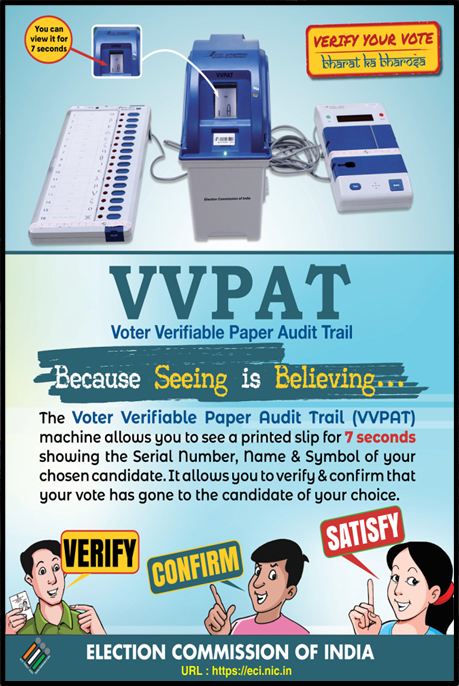SC SEEKS GOVT, EC RESPONSE ON PLEA FOR FULL COUNT OF VVPAT SLIPS
Why in the news?
Supreme Court seeks Election Commission and Government response on petition for full count of VVPAT slips in elections.
About the Supreme Court’s Action:
- The Supreme Court issued notice to the Election Commission (EC) on a writ petition regarding the verification of VVPAT slips.
- The petition, filed by lawyer Arun Kumar Agrawal, seeks mandatory cross-verification of EVM counts with VVPAT slips.
- The petitioner advocates for a complete count of VVPAT slips instead of the current practice of verifying only five randomly selected EVMs through VVPAT paper slips.
- The petition challenges the EC’s guideline of sequential VVPAT verification, suggesting simultaneous verification by deploying more personnel.
source:scribd
| What is VVPAT (Voter Verifiable Paper Audit Trail)?
● VVPAT (Voter Verifiable Paper Audit Trail) is an independent printer attached to EVMs for voter verification. ● It prints a slip with the party name and symbol chosen by the voter. ● Introduced in 2014, they aim to enhance transparency in elections. ● Accessible only to polling officers. ● EVMs and VVPATs are standalone and not network-connected, per Election Commission of India (ECI). What are Electronic Voting Machines (EVMs)? ● Electronic Voting Machines (EVMs) record votes electronically, first used in 1982 in Kerala’s Paravur Assembly Constituency. ● Since 1998, EVMs have replaced ballot boxes, used nationwide since 2004 for Lok Sabha elections. ● Developed by the Election Commission’s Technical Experts Committee in collaboration with Bharat Electronics Ltd and Electronic Corporation of India Ltd. ● Consist of a Control Unit and a Balloting Unit connected by a cable. ● Voter presses a button on the Balloting Unit to cast their vote. ● Each EVM can record up to 2,000 votes and runs on a battery. |




